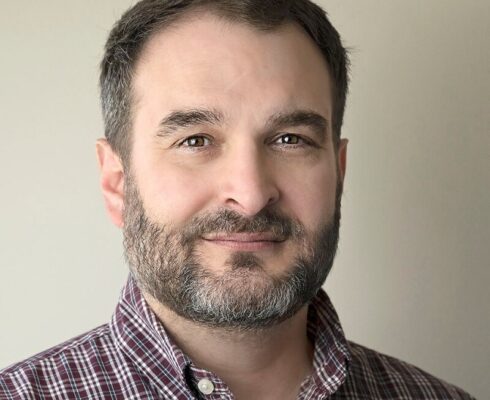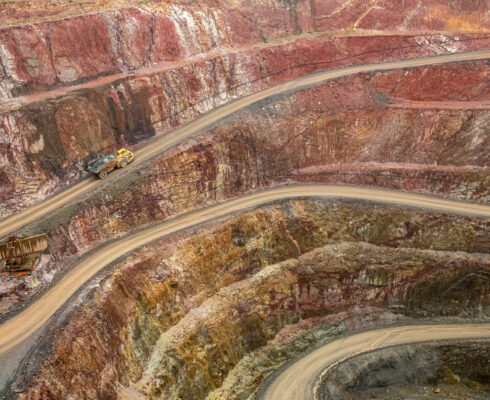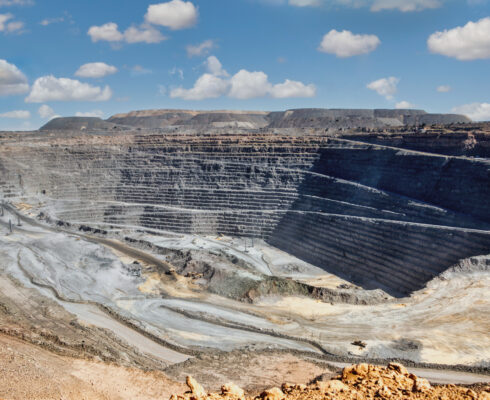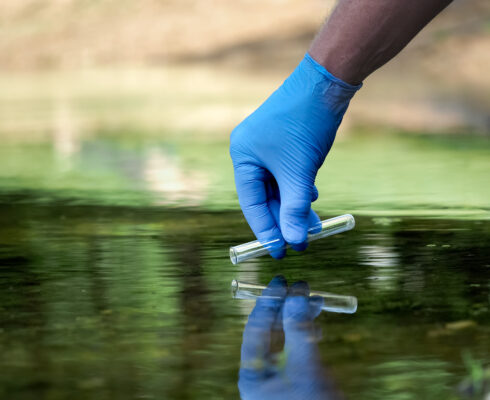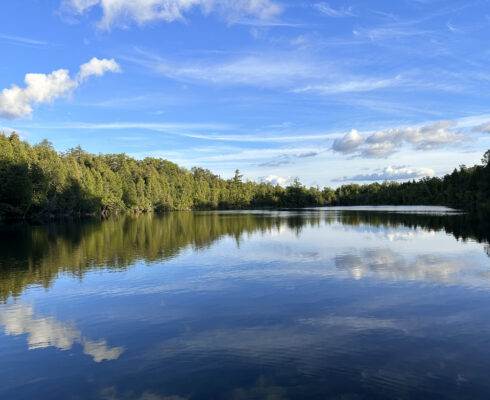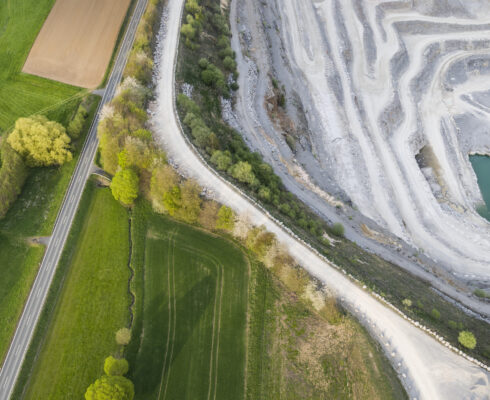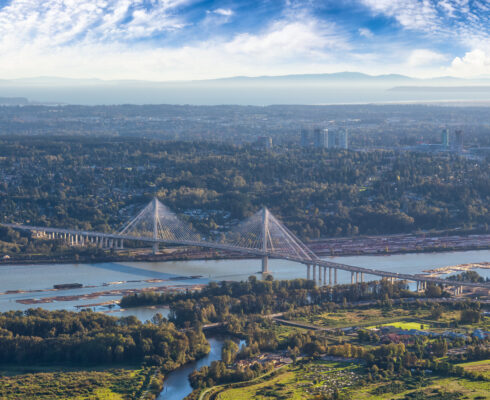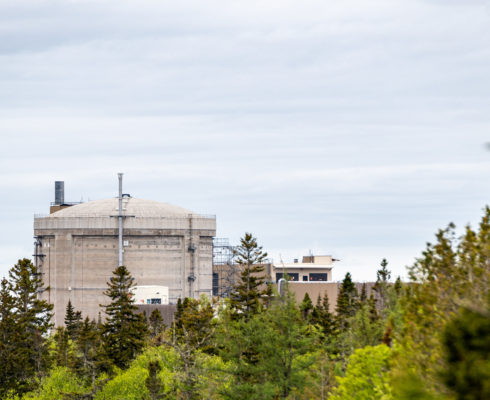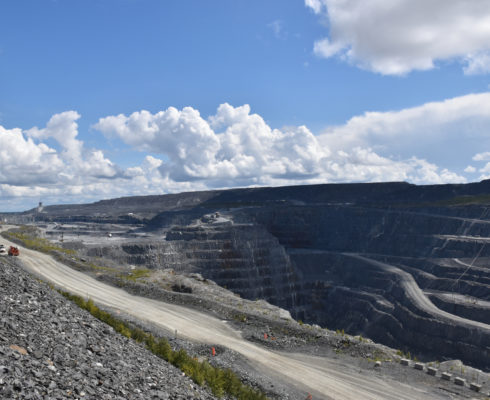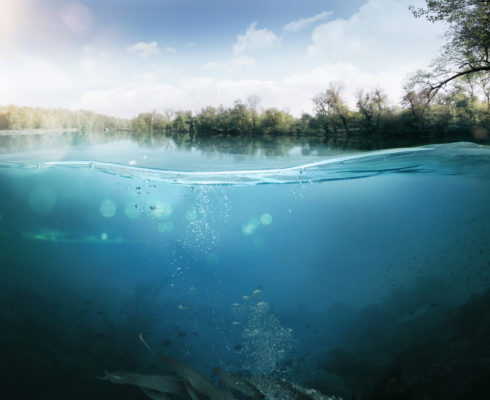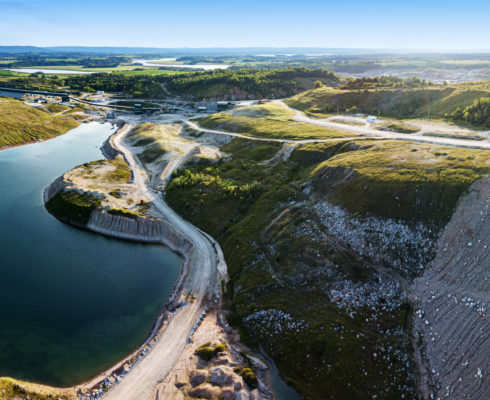Modelling the future
Reactive transport models (RTM) provide a way to simulate physical and geochemical processes between minerals, water, gas, and organics, which can be applied to various settings, including mine waste facilities.
Just as we simulate subsurface flow in groundwater models using mathematical equations representing water flow in porous media with measurable properties, with RTM we simulate reactions in the subsurface, along with flow and transport, based on measurable properties.
By using an approach that incorporates thermodynamics and kinetics of reactions and physics of water flow, we can simulate a waste rock pile or tailings facility by entering the mineralogical composition, simulating rainfall and oxygen at the top of the model, and use the model to predict how mineral weathering will influence the drainage water quality.
According to our former Senior Hydrogeochemist Matt Neuner, there are two ways Ecometrix uses RTM that make it a powerful tool for its clients.
First, in testing conceptual models.
 Simulated oxygen concentrations in tailings and potential cover materials, accounting for mineral reactions, moisture contents, and diffusion through the pore gas
Simulated oxygen concentrations in tailings and potential cover materials, accounting for mineral reactions, moisture contents, and diffusion through the pore gas
“We have particular ideas about processes that we think might be happening in a mine waste facility,” he says. “That’s developed based on previous conceptual models and the data we collect, but there are often different facets to a conceptual model, and it can be difficult to work out what’s happening at a particular site. RTM is a tool that can help us work out what’s actually happening.”
The other application is in improving Ecometrix’s predictions.
“As we develop conceptual models for what we think is happening as mine waste is weathering or different reactions are happening, we’re often charged with trying to understand how that evolves in future,” Matt continues, adding that it’s not unlikely to think about the impact of a mine’s closure decades or even centuries into the future.
“Using an RTM allows us to develop this more robust representation of the system and then, with that confidence, we can model the future.”
Matt says the development of RTM began in the 1990s, restricted to an academic or national laboratory setting. It wasn’t until the early 2000s that they started being applied to mine environment assessments.
“They’re complex models and there weren’t many people who knew how to use them that were also supporting mine operators in these kinds of assessments,” he says. “It’s still something that’s not widely applied but is starting to change now.”
As we develop conceptual models for what we think is happening as mine waste is weathering or different reactions are happening, we’re often charged with trying to understand how that evolves in future.
Mineralogy as a starting point
Historically, before RTM, predictions were completed with the help of laboratory testing results, which would then be scaled up and compared to water quality from long-standing operating mines to try and predict what would happen at a mine site. Naturally, there was often a big difference between laboratory and reality.
“Now, with RTM, the starting point is the mineralogy of the mine waste,” Matt explains. “To do that and model what’s happening, we need more accurate mineralogy. With advanced mineralogical methods, we’re able to quantify, with quite precise levels, how metals are hosted in sulfides and other minerals.”

Mackenzie Bromstad, former Senior Geochemist at Ecometrix, says that one of the key strengths of Ecometrix is its in-house mineralogy expertise.
“Automated mineralogy techniques have been around for decades, but they have not routinely been applied in environmental assessments due to technological limitations and/or cost,” she says.
“Newer systems with better and more sensitive detectors and faster operation make these easier to use, and more accessible to clients. Couple that with sample prep and processing innovation and we can analyze more challenging environmental materials. In short, with recent technical advances and innovation in automated mineralogy, it’s easier than ever to access and use these methods.”
Elevating work at Ecometrix
Thanks to its use of RTM, Ecometrix is at the forefront of providing an elevated and advanced experience to clients.
Plus, by working closely with the developers of the software and RTM code, as well as experts in the laboratories completing these advanced mineralogical methods, it can stay at the cutting edge of new innovations and movements.
“The main motivation is to reduce the uncertainty in the risks these mine operators have,” Matt says. “If a mine at the closure period finds at that point that they need to treat the water coming out of the mine site, that’s a big cost. Uncertainty in mine waste management is a risk that mine operators want to better understand, and these tools are great at doing that.”
As just one tool Ecometrix is leveraging to empower its clients, we’re excited to continue developing our internal modelling expertise to deliver outstanding environmental project results. This extends beyond our work with RTMs to MineMod™ and IMPACT™, two propriety modeling software tools developed in-house.
Want more environmental insight?
Rina Parker, our Director of Nuclear Services, discusses how small modular reactors (SMRs) play a key role in helping Canada meet its net-zero emissions goals.



